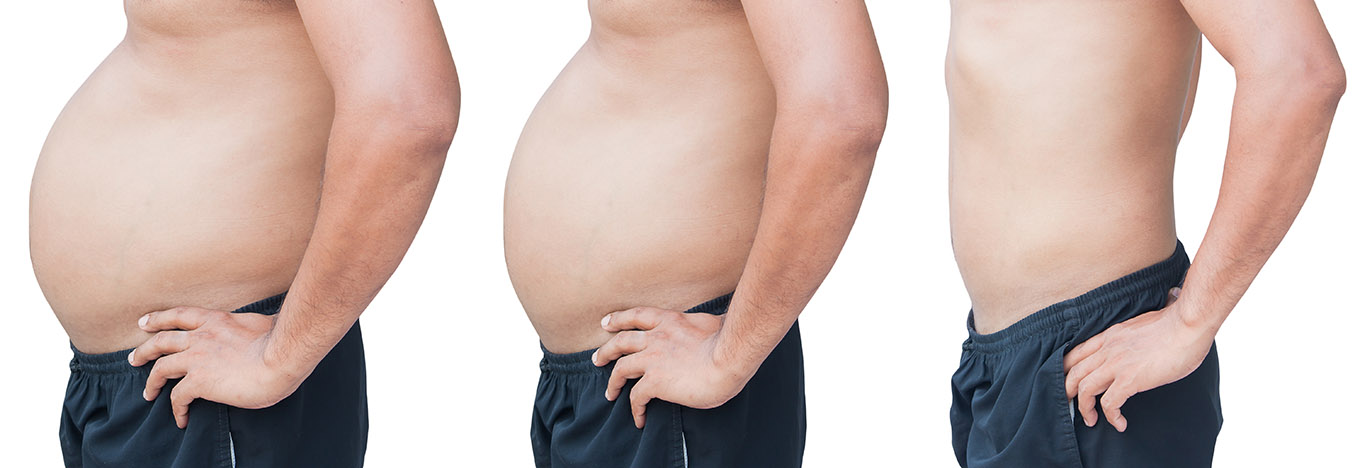Belly fat busters
June 12, 2019

Our two experts – a personal trainer and clinical dietitian – offer tips in this two-part series
Couple diet and exercise by reading Part I in the series.
PART II – Nutrition and recipe with Rosemary Weaver, MPH, RDN, LDN, Clinical Dietitian at the NCH Wellness Center
What can be done to reduce belly fat?
Unfortunately, there is no magic remedy regarding diet and loss of belly fat. When you lose weight on most diets, typically belly fat is lost first. A sensible weight management program which combines exercise and a balanced diet is key.
Does this mean cutting calories?
Usually, yes. A 250-500 calorie deficit over maintenance calorie needs is a sensible starting point for most people. This should result in a weight loss of about ½ to 1 pound per week, without really adversely affecting you.
What is the risk of belly fat?
Studies point to the fact that a big belly can be trouble for your heart. The incidence of heart disease rises in women with a waist circumference of more than 35 inches and men with a waist circumference of more than 40 inches. Big bellies can affect the organs involved in regulating blood sugar. Insulin stimulates the liver to store sugar in the blood for later use. Belly fat keeps the liver from doing this efficiently, so more blood sugar accumulates in the bloodstream, increasing the risk for diabetes.
So what foods should you avoid and why?
Too many calories in general should be avoided, but watch out for the following:
- Excess alcohol – Often, moderate to heavy alcohol intake is associated with bigger waists because when you drink alcohol, the liver burns alcohol instead of fat. Alcohol provides extra non-nutritive calories, not to mention the extra food calories that are usually consumed when we drink.
- Added sugars – Watch out for sodas and sweets.
- Excess fat – Monitor your saturated fats which are found in animal foods and some plant fats like coconut oil, and trans fat, found in many commercially prepared and processed foods containing fat, like sauces, creamers, commercially packaged baked goods and frozen pizza.
Eat only moderate portions of lean meats and consume fish 2-3 times/week; consume low fat dairy and avoid added fats, like bacon, butter and creamy salad dressings.
What foods should we be eating long-term to reduce belly fat?
A calorie-appropriate diet, focused on a wide variety of vegetables and fruit, whole grains, healthy fats and lean protein is the answer. Consider the Mediterranean eating style.
What about carbs?
Vegetables, fruits, whole grains and beans (legumes) as well as lowfat dairy contain the type of healthy carbs your body needs. A balanced diet should typically contain about 45-50% calories from good carb sources.
What about indigestible carbohydrates?
Indigestible carbs (soluble fiber) may play a role in prevention. According to recent studies, a diet rich in soluble fiber can help with satiety/weight management and may have a slight advantage on the management of visceral fat. We need both soluble and insoluble fiber to be healthy, and most Americans get around 16 grams of dietary fiber/day, well short of the 25-38 grams/fiber/day requirement.
How can soluble fiber be incorporated into a diet?
To boost your soluble fiber, aim to get about 10 grams per day. This is achieved by eating two small apples per day; one cup of green peas; or ½ cup of pinto beans.
What other foods contain soluble fiber?
Other sources include oats, nuts, barley, psyllium seeds, Brussels sprouts, avocado, sweet potato, figs, nectarines, carrots and many other fruits and vegetables. Enjoy this recipe for Shaved Brussels Sprouts & Apple Salad that incorporates several sources of soluble fiber.
Learn more about the NCH Wellness Center’s programs, equipment and specially trained staff that can help you achieve all of your fitness goals. Call 847-618-3500 to become a member.